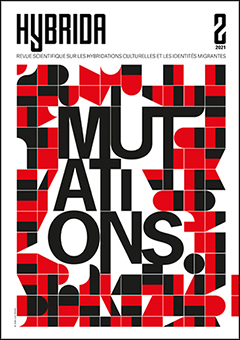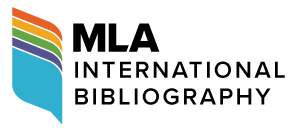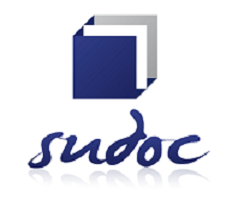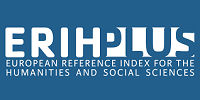Transgression and hybridity in the work of the Franco-Armenian writer Denis Donikian
DOI:
https://doi.org/10.7203/HYBRIDA.2.20654Keywords:
exile, hybridity, French literature, diaspora, genocide Abstract
Abstract
The article deals with both formal and thematic transgressions and hybridizations in the work of French-Armenian author Denis Donikian. His French-Armenian identity and his legacy of genocide and exile have deeply influenced his work, which is dedicated to alleviating the malaise caused by a fractured history, through a plural and experimental artistic and literary activity which makes explicit the existence of a permanent dialogue between texts and cultures that fuels human existence and creativity.
 Downloads
Downloads
 References
References
Abrahamian, L. (2006). Armenian Identity in a Changing World. Mazda Press.
Ange, C. (2007). Le fragment comme forme texte : à propos de Fragments d’un discours amoureux. Communication et langages, 152, 23-34. https://doi.org/10.3406/colan.2007.4653
Angermeyer, P. S. (2005). Spelling bilingualism: Script choice in Russian American classified ads and signage. Language in society, 34(4), 493-531. https://www.jstor.org/stable/4169446
Barthes, R. (1970). S/Z. Le Seuil.
Bhabha, H. (1994). The Location of Culture. Routledge.
De la Bretèque, A. & Stoichita, V. (2012). Music of the new times: Romanian Manele and Armenian Rabiz as Icons of Post-communist changes. In I. Biliarsky, O. Cristea, A. Oroveanu (Éds.). The Balkans and Caucasus: Parallel Processes on the Opposite Sides of the Black Sea (pp. 321-335). Cambridge Scholars Publishing.
Deleuze G. & Guattari, F. (1980). Mille plateaux. Capitalisme et schizophrénie. Éditions de Minuit.
Donikian, D. (1975). Ethnos. s.n.
Donikian, D. (1995). Fragments de figures apatrides. Publisud.
Donikian, D. (2005). Hayoutioun : Chronique d’une Arménie virtuelle. Nouvelles d’Arménie.
Donikian, D. (2011). Vidures. Actes Sud.
Donikian, D. (2016). Vidures, Un roman en questions. Actual Art.
Élisée Vardapet (1869). Histoire de Vartan et de la guerre des Arméniens écrite à la défense de David Mamigonien. In V. Langlois, Historiens Arméniens du Cinquième siècle (2) (pp. 183- 251). Librairie de Firmin Didot Frères, Fils et Cie.
Glissant, E. (1990). Poétique de la Relation-Poétique III. Gallimard.
Hybride. Dans Dictionnaire de l’Académie Française (9e édition). https://www.dictionnaire-academie.fr/article/A9H1151
Lagarde, Y. (2020, 15 juin). À l’origine de l’annus horribilis. France Culture. https://www.franceculture.fr/histoire/a-lorigine-de-lannus-horribilis
Leveratto, J. & Leontsini, M. (2008). Internet et la sociabilité littéraire. Éditions de la Bibliothèque publique d’information.
Meroujean, M. (2003, septembre). Le Choix de la Lucidité. Nouvelles d’Arménie Magazine, 89, 61.
Nouss, A. (2015). La condition de l’exilé. Éditions de la Maison des Sciences de l’Homme.
Peytard, J. (1990). Évaluation sociale dans les thèses de Mikhaïl Bakhtine et représentations de la langue. Langue française, 85, 6-21. https://doi.org/10.3406/lfr.1990.6174
Rabau, S. (2002). L’intertextualité. Flammarion.
Türesay, Ö. (2013). L’Empire ottoman sous le prisme des études postcoloniales. À propos d’un tournant historiographique récent. Revue d’histoire moderne & contemporaine, 2(2), 127-145. https://doi.org/10.3917/rhmc.602.0127
Young, R. (1994). Colonial Desire: Hybridity in Theory, Culture and Race. Routledge.
Published
How to Cite
-
Abstract407
-
HTML (Français )59
-
PDF (Français )426
Issue
Section
License
All the documents in the OJS platform are open access and property of their respective authors.
Authors publishing in the journal agree to the following terms:
- Authors keep the rights and guarantee HYBRIDA the right to be the first publication of the document, licensed under a Creative Commons license Attribution-NonCommercial-ShareAlike 4.0 International (CC BY-NC-SA 4.0) that allows others to share the work with an acknowledgement of authorship and publication in the journal.
- Authors are allowed and encouraged to spread their work (once published) through electronic means using personal or institutional websites (institutional open archives, personal websites or professional and academic networks profiles) once the text has been published.

















